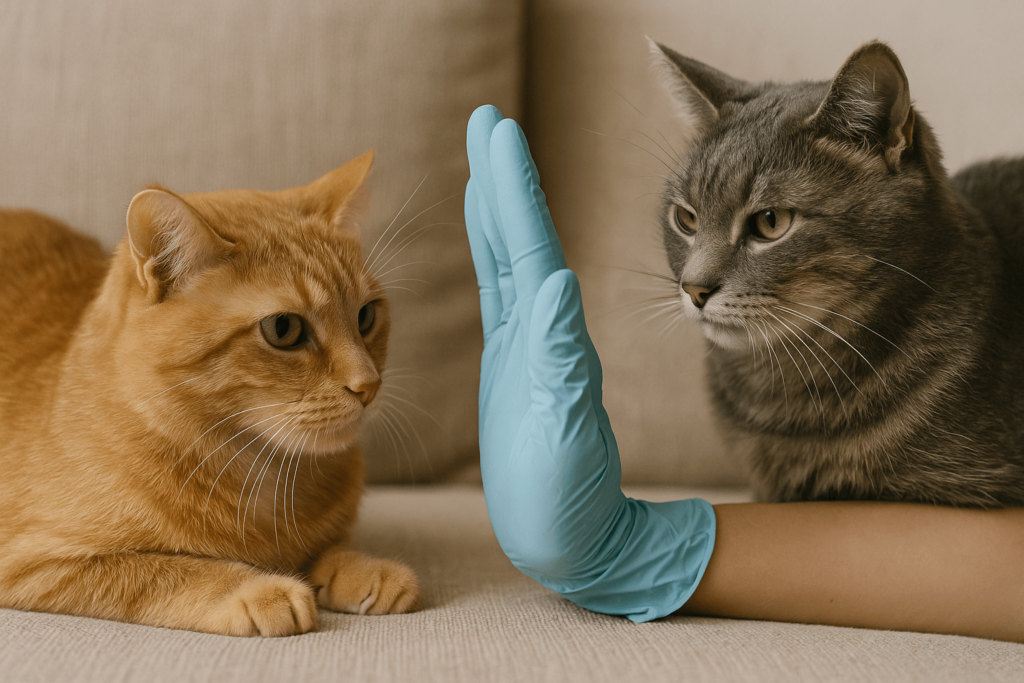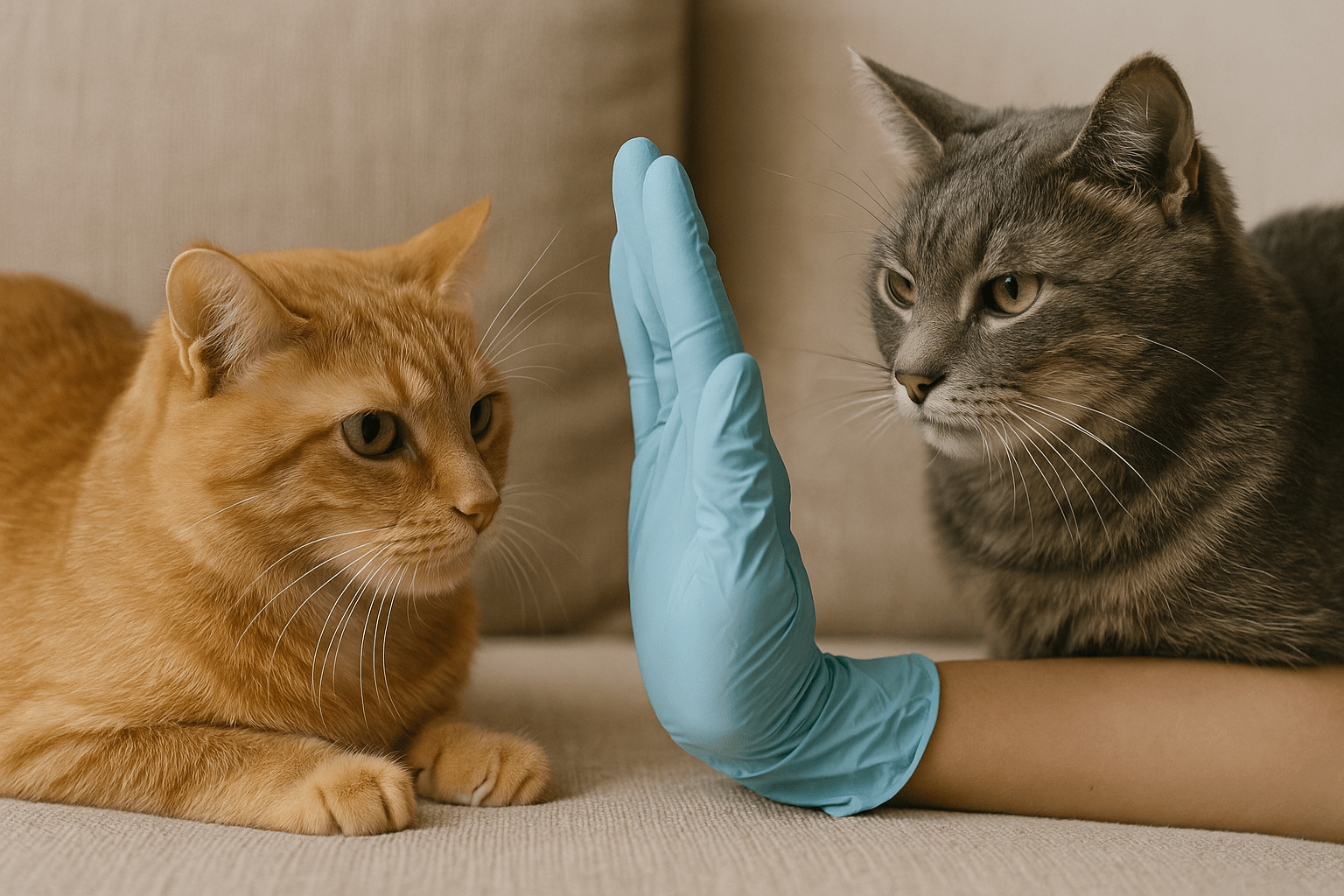Is Cat Leukemia Contagious? Understanding Feline Leukemia Virus (FeLV)
Cat leukemia, caused by the feline leukemia virus (FeLV), is a serious and often misunderstood disease that affects cats worldwide. One of the most common questions cat owners ask is whether this condition is contagious. The short answer is yes—FeLV is highly contagious among cats, but understanding how it spreads and what you can do to protect your pet is crucial. In this blog post, we’ll explore the transmission methods, symptoms, prevention strategies, and treatment options for FeLV. By the end, you’ll have a clear understanding of how to keep your feline friend safe from this potentially life-threatening illness.
How Does Feline Leukemia Spread?
Feline leukemia virus is primarily spread through close contact between infected and uninfected cats. Understanding the ways FeLV can be transmitted is essential for preventing its spread in multi-cat households or communities.
Saliva Transmission:
FeLV is commonly spread through saliva, making shared food bowls, water dishes, and mutual grooming risky behaviors for uninfected cats.Nose-to-Nose Contact:
Direct nose-to-nose interactions between cats can facilitate the transfer of the virus, especially during playful or affectionate moments.Bite Wounds:
Aggressive behavior, such as biting or fighting, significantly increases the risk of FeLV transmission due to blood exposure.Shared Litter Boxes:
While less common, the virus can also spread through contaminated feces or urine in shared litter boxes.Mother-to-Kitten Transmission:
Infected mother cats can pass the virus to their kittens either in utero or through nursing after birth.
By recognizing these transmission routes, cat owners can take proactive steps to minimize the risk of FeLV spreading within their homes or neighborhoods.

Symptoms of Feline Leukemia Virus
Identifying the symptoms of FeLV early can make a significant difference in managing the disease and improving your cat’s quality of life. Here are some common signs to watch for if you suspect your cat may be infected.
Weight Loss and Loss of Appetite:
Cats with FeLV often experience noticeable weight loss and a reduced interest in food, which can lead to malnutrition if left untreated.Lethargy and Weakness:
Infected cats may appear unusually tired or weak, spending more time sleeping than usual.Recurrent Infections:
FeLV weakens the immune system, making cats more susceptible to frequent respiratory, skin, or urinary tract infections.Pale Gums and Jaundice:
Pale gums or yellowing of the eyes and skin can indicate anemia or liver problems associated with FeLV.Behavioral Changes:
Cats may exhibit changes in personality, such as increased aggression or withdrawal, as a result of discomfort or illness.
Recognizing these symptoms early allows for prompt veterinary intervention, improving outcomes for cats living with FeLV.
Check this guide 👉Feline Leukemia and Skin Sores: Best 7 Health Tips!
Check this guide 👉Signs of Cat Leukemia: Best 7 Expert Tips!
Check this guide 👉Cat Leukemia Vaccine Side Effects: Best 7 Expert Tips!
Ways FeLV Spreads | Prevention Strategies |
|---|---|
Saliva during grooming | Separate food and water bowls for each cat |
Bite wounds from fights | Neuter/spay cats to reduce aggressive behavior |
Shared litter boxes | Clean litter boxes frequently and separately |
Mother-to-kitten transmission | Test breeding cats for FeLV before mating |
Nose-to-nose contact | Keep infected cats isolated from healthy ones |
Diagnosing Feline Leukemia Virus
Early diagnosis of FeLV is critical for managing the disease effectively. Veterinarians use specific tests to confirm infection, and understanding the process can help cat owners navigate this challenging situation.
Initial Screening Tests:
A simple blood test called an ELISA (enzyme-linked immunosorbent assay) is commonly used to detect FeLV antigens in a cat’s bloodstream.Confirmatory Testing:
If the initial test is positive, veterinarians may perform a second test, such as IFA (immunofluorescence assay), to confirm the diagnosis.Testing Kittens Early:
Kittens born to infected mothers should be tested multiple times, as maternal antibodies can interfere with accurate results initially.Regular Testing for At-Risk Cats:
Outdoor cats or those exposed to other cats should be tested annually to ensure early detection of FeLV.Understanding Test Results:
False positives and negatives can occur, so veterinarians consider clinical signs and history when interpreting test outcomes.
Accurate diagnosis empowers cat owners to make informed decisions about care and treatment for their FeLV-positive pets.
Managing and Treating Feline Leukemia Virus
While there is no cure for FeLV, proper management can help infected cats live longer, healthier lives. These strategies focus on supporting their immune system and addressing secondary complications.
Regular Veterinary Check-Ups:
Frequent vet visits allow for monitoring of the cat’s overall health and timely treatment of any secondary infections.High-Quality Nutrition:
Providing a balanced diet rich in nutrients strengthens the immune system and helps maintain energy levels.Minimizing Stress:
Stress weakens immunity, so creating a calm, stable environment is vital for FeLV-positive cats.Avoiding Exposure to Other Diseases:
Keep FeLV-infected cats indoors to prevent exposure to pathogens that could worsen their condition.Supportive Therapies:
Medications, supplements, and fluids may be prescribed to manage symptoms and improve quality of life.
With diligent care, many FeLV-positive cats can enjoy happy, fulfilling lives despite their diagnosis.
Preventive Measures for Multi-Cat Households
In homes with multiple cats, preventing the spread of FeLV requires careful planning and consistent practices. These measures help protect all residents while maintaining harmony.
Separate Infected Cats:
Isolate FeLV-positive cats from uninfected ones to minimize the risk of transmission.Vaccinate All Cats:
Ensure all healthy cats are vaccinated against FeLV, even if they don’t go outside.Provide Individual Resources:
Offer separate food bowls, water dishes, and litter boxes for each cat to reduce shared contact points.Monitor New Additions Carefully:
Test new cats for FeLV before introducing them to your household to avoid accidental exposure.Maintain Hygiene Standards:
Regularly clean and disinfect shared spaces to eliminate lingering viruses or bacteria.
Implementing these precautions creates a safer environment for all cats under one roof.
Emotional Support for FeLV-Positive Cats
Caring for an FeLV-positive cat involves not just physical health but also emotional well-being. These tips focus on nurturing their mental and emotional needs.
Spend Quality Time Together:
Engage in gentle play or cuddle sessions to strengthen your bond and provide comfort.Create a Safe Space:
Designate a quiet area where your cat can retreat when feeling overwhelmed or unwell.Use Calming Products:
Consider pheromone diffusers or calming sprays to reduce anxiety and promote relaxation.Encourage Moderate Activity:
Light exercise helps maintain muscle tone and boosts mood without overexertion.Celebrate Small Wins:
Focus on incremental improvements in health or behavior to stay positive throughout the journey.
Providing emotional support ensures your FeLV-positive cat feels loved and valued despite their condition.
Debunking Common Myths About FeLV
Misinformation about feline leukemia virus can lead to unnecessary fear or poor decision-making. Let’s clarify some common myths surrounding FeLV.
Myth: FeLV Always Leads to Death Quickly:
Fact: Many FeLV-positive cats live for years with proper care and attention.Myth: Indoor Cats Can’t Get FeLV:
Fact: While indoor cats are at lower risk, they can still contract FeLV through contact with infected visitors or escaped outdoor encounters.Myth: Vaccinated Cats Are Immune to FeLV:
Fact: Vaccination reduces risk but doesn’t guarantee complete immunity against FeLV.Myth: FeLV Is Highly Contagious to Humans or Dogs:
Fact: FeLV exclusively affects cats and poses no threat to humans or non-feline animals.Myth: FeLV-Positive Cats Should Be Euthanized Immediately:
Fact: With proper care, many FeLV-positive cats can live fulfilling lives and bring joy to their families.
Dispelling these myths fosters a better understanding of FeLV and encourages compassionate care for affected cats.
Frequently Asked Questions About Feline Leukemia Virus
Can humans contract feline leukemia?
No, FeLV only affects cats and cannot be transmitted to humans or other species.
Is there a vaccine for FeLV?
Yes, a vaccine is available and recommended for at-risk cats, though it does not guarantee 100% protection.
Can FeLV-positive cats live with healthy cats?
It’s best to keep FeLV-positive cats separated from uninfected cats to prevent transmission.
What is the life expectancy of an FeLV-positive cat?
With proper care, many FeLV-positive cats can live for several years, though individual outcomes vary.
How can I prevent my cat from getting FeLV?
Vaccinate your cat, keep them indoors, and avoid contact with unknown or stray cats.
Protecting Your Cat from Feline Leukemia Virus
Feline leukemia virus is a contagious and potentially devastating illness, but armed with knowledge and preventive measures, cat owners can safeguard their pets’ health. From understanding how FeLV spreads to implementing effective management strategies, every step counts toward ensuring a safe and happy life for your feline companion. Whether you’re caring for an FeLV-positive cat or taking steps to prevent infection, remember that vigilance, compassion, and regular veterinary care are key to overcoming the challenges posed by this disease. Together, we can give our beloved cats the best chance at thriving, even in the face of adversity.
Cat Fever Treatment: Best 7 Expert Tips! Discover expert advice on identifying, managing, and treating fever in cats to ensure their quick recovery and well-being.
Understanding Meloxicam for Cats: Best 7 Expert Tips! Learn how to safely administer meloxicam, manage side effects, and ensure your cat's comfort with expert advice on feline pain relief.
Amoxicillin for Cat UTI: Best 7 Expert Tips! Discover safe usage, dosage guidelines, and expert advice on treating feline urinary tract infections effectively with amoxicillin.
Understanding Cat Cancer Treatment: Best 7 Expert Tips! Discover expert advice on managing feline cancer, from early detection to treatment options, ensuring your cat’s health and comfort.





